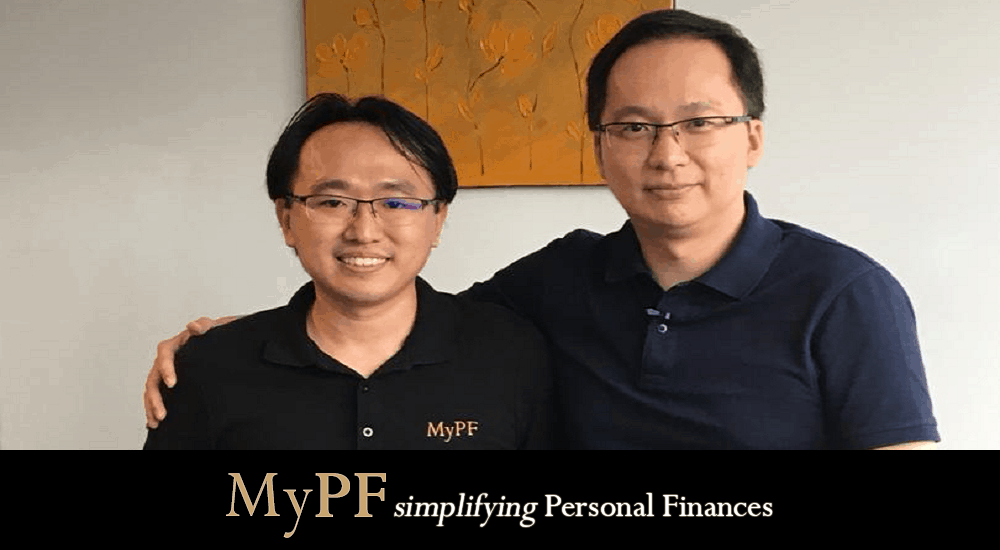StashAway Co-founder and Chief Investment Officer (CIO), Freddy Lim, in conversation with My Personal Finances about benefits of using robo advisory and why a part of your financial portfolio should be invested overseas.

Contents
Thank you to StashAway and co-founder / CIO Freddy Lim for today’s interview. For our followers who are yet to meet Freddy, can you please briefly introduce yourself.
I am a Malaysian, co-founder and Chief Investment Officer of StashAway with 18 years investing experience across global institutional and retail investments.
What % of an average investor’s portfolio should be invested overseas (outside Malaysia) & why? (0:39)
It requires you to know your goals. For example, to send your child overseas for education you will be looking at a 15 year portfolio biased towards global investing. However, if you want to retire in Malaysia say a 30 year portfolio 50% locally and 50% overseas. It really depends on your portfolio for each life goal you have.
When you invest less than 50% locally for retirement, you take currency risks in your personal decision. I would caution investors to revisit those numbers. Or alternatively if you have the skill sets and expertise than it’s okay to have less than 50% locally. With StashAway, our innovative global portfolios are not static as investments are being moved to US and other parts of the world based on economic conditions as they change. As they change, our algorithms will change making it easier to do so.
You have to understand that in a systematic market meltdown, certain currencies do well like USD, Yen & Swiss Franc. For example in the Lehman crisis, USDSGD went up by 35% where even SGD was not as safe haven. USDMYR went up significantly as well. It would be very nice to have a major offset in local currency terms as a portfolio insurance. At StashAway it is done in a systematic and automatic manner.
How does an investor who is working with a personal finances advisor benefit from using robo advisory or digital wealth management services? (4:28)
Let’s talk about robo advisory versus traditional wealth managers as the fees are much lower. For example entry fees and yearly management fees. A key thing is fees are not charged upfront. As you go along, you pay 1/12th of the fees pro-rated. Your money is growing faster and working harder for you and more aligned with performance. There’s better user interface, real-time updates, and no lock-ups or penalties for withdrawals. This liquidity is very valuable for clients. In general robo advisors can perform a lot of these functions.
For StashAway, we have introduced a lot of intelligence into investment logic versus most buy-and-hold or permanently passive portfolio approach. Economic environments change and in our lifetime we will have gone through 5 to 6 economic cycles such as recessions and good times. Those cycles are medium-long term and you can harness this information and make changes to your portfolio. The changes made are free where the costs of switching are absorbed. This helps you navigate big changes of the economic cycle including hedging and providing protection to the portfolio.
StashAway is very happy to work with other partners on the premise that we do not promote unnecessarily expensive products including external fund managers, wealth managers, etc. We have a common interest to promote financial education and putting customer interests first. We will partner with anyone and that’s what we want to do.

(MyPF Founder Stev & StashAway Co-Founder Freddy)
How can you explain in a simplified way StashAway’s ERAA model to non-finance professionals? (9:24)
Asset returns and risks do not stay constant. For example, Bursa does 20% in good times while in bad times you lose 10-20%. Or the 1970s oil shock where only gold, natural resources, and some alternative investments performed. We want to know how assets behave in different economic environments. StashAway works to identify where we are today.
Economic Regime-based Asset Allocation adjusts itself for free in-line with economic conditions. Human input comes in where our duty is not to make decisions but to check and audit all the input that comes into the model and that it’s not garbage going in. It’s not Skynet from Terminator but it’s a systematic algorithm with independent oversights.
How will using StashAway be beneficial in justifying the additional layer of fees compared to buying ETFs directly? (12:18)
I have tried buying ETFs individually myself but there are a lot of hidden charges and minimum sizes. You must be really wealthy in order to do anything. Even if you have the expertise and know all the hidden costs, you cannot achieve the precision and flexibility that you can with a platform like StashAway. We deal with 0.0001 units of any securities using fractional technology. Why is this important? Whatever small amount of money you have, you can now regardless of wealth level afford multiple goals and multiple portfolios. We also pay for custodians, lawyers and institutional setup fees to protect your money that’s not easily visible.
Before you invest,
- Have 6-9 months of living expenses
- Have a bad mood fund for when you’re down to treat yourself well
- Invest the rest
What are StashAway’s future plans for the next year? (15:57)
I am extremely excited for what we have in store in 2019 alone. We have product road maps, new innovations, new products, more globalized access, and different types of portfolios. Just by fully focusing working on them, time will just pass by. More products. More geography. More customers. More prosperity for everyone.
Promotional 50% off StashAway Fees for MyPF Readers!
50% off fees for the first RM100,000 invested for 6 months for MyPF members with this MyPF exclusive link:



Leave A Comment